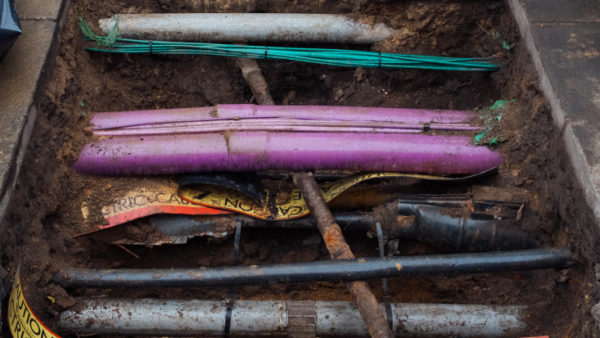Researchers at Newcastle University are using a digital twin of a new Urban Sciences Building (USB) to monitor and tweak performance and test future operational scenarios.
The 12,500 sq m building is the centrepiece of a new development called the Helix, being built in the city centre, and won Project of the Year – Public Use at the CIBSE Building Performance Awards last month.
It was designed as a “Living Laboratory”, a testbed for urban sustainability embedded with 4,000 devices, including micro meters and sensors that record granular data on heating and cooling, energy use, CO2 levels, solar energy production and more.
The data is fed to an open protocol BMS and displayed in real-time in a 3D digital twin developed by a PhD researcher at the university, with input from the university estates team and industry partners including Siemens and BuroHappold.
The digital twin is based on a Level 2 BIM Asset Information Model created during construction by main contractor Bowmer & Kirkland. It enables users to zoom in and out, isolate individual floors and click on each of the sensors to view data as it is recorded, some of it in up to one-second resolution. The browser-based model and can be accessed via this link. A live data stream of the BMS data can be seen here.
Researchers are analysing BMS data in the digital twin as part of the cutting-edge Engineering and Physical Sciences Research Council (EPSRC)-funded project Building as a Power Station.
The digital twin is helping researchers forecast what would happen when non-critical loads are switched off to provide rapid response to the grid if it is under the strain. Big companies like Tesco already do this kind of thing on a mass scale, but it has not yet been done on a single building.– Mark Dowson, BuroHappold Engineering
The project aims to evaluate the potential for buildings to provide demand response to electrical networks as a means of managing grid constraints.
Demand response programs typically involve very large demand centres, coordinated by National Grid, but the focus here is on smaller loads from individual buildings that could be grouped together. A 30kW vanadium redox flow battery, due to be installed by the university this year, will turn the USB and other buildings on the Helix into the UK’s first electrical smart grid storage demonstrator project.
Mark Dowson, associate at BuroHappold Engineering, a partner in the project alongside B&K, Keepmoat, Northern Powergrid, Siemens and others, told BIM+: “The digital twin is helping researchers forecast what would happen when non-critical loads are switched off to provide rapid response to the grid if it is under the strain.
“Big companies like Tesco already do this kind of thing on a mass scale, but it has not yet been done on a single building. Part of it involves looking at systems that provide comfort, like heating and cooling, and gauging at which point occupants start to complain they are uncomfortable. Researchers have been assessing our operational energy data, dashboarding consumption and setting target lines.”
The Urban Sciences Building achieved a BREEAM “Excellent” score of 78.1%, and bespoke and auditable sustainability targets developed by BuroHappold (sustainability consultant on the build) helped drive down its energy use in operation.
“At the very start of the project we convinced the client that BREEAM was not going to guarantee a low energy building. A bespoke sustainability framework was developed to include numerous process-based targets to perform uplifted analysis,” says Dowson.
An operational energy model was developed to surpass standard compliance modelling required under Building Regulations and predict actual energy use in operation. The model took into account factors such as out of hours energy use, 24-hour operational areas and plug loads.
After 12 months of monitoring the building’s actual energy use, it was found to be performing within 3% of the prediction. “The construction industry often talks about the energy performance gap, which is the difference between compliance and reality, we have managed to bridge that gap to produce a very accurate operational prediction. We’ve closed the loop and provided the data to prove the principle,” says Dowson.
With two years of soft landings still to run, the university is expected to further fine tune the USB’s systems to optimise energy performance.













